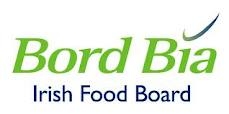

The final Brand Forum meeting of 2016, themed on Understanding the Consumer” featured two inspirational presentations. The first presentation was given by two speakers from Heineken Ireland; Fiona Curtin, Head of Innovation and Leona Daly, Consumer Insights Manager, who outlined the consumer strategy and creative execution of the Orchard Thieves cider launch in 2015.
The Irish cider market had been dominated since the 1980’s by Bulmer’s. Many attempts have been made to make inroads into the market in the past; Kopparberg, Hudson Blue, Cashel, but all failed and were effectively withdrawn. Orchard Thieves’ objective was to gain a 2% market share in the first year rising to 10% in year 5. They actually achieved a 6.5% market share in year one.
The most important element in the launch strategy was to define and understand the target audience; an exercise which was carried out with meticulous detail. Defined first in demographic terms; 25-35 young professionals, men and women, this broad segment were then analysed in greater detail using a variety of qualitative research methods; consumer workshops, co-creation groups and ethnographic fieldwork; hanging out with members of the target group in pubs and clubs, listening to radio stations they tune into and the social media channels they engage with. Because the success of the launch would depend on persuading a segment of the wider target audience to change from a very dominant brand leader intensive efforts were made to understand their aspirations attitudes and deep-seated concerns which resulted in the following consumer insight; I want to cut loose from life’s pressures to enjoy unplanned social adventures with my friends so we can be our true selves. In pre-digital age language, this meant that the core audience was concentrated at the hedonistic end of the wider target group. They were characterised as being torn between the structured demands of work and life and conscious of really living life. The guiding brand mantra for the team working on creative executions was; rewarding those who boldly pursue enjoyment. The functional benefits of the product were not ignored and further research resulted in strengthening two key attributes; a sweeter taste than the market leader and a distinctive ‘appley’ flavour.
The consumer insight and brand mantra were then distilled into a brand essence; Grab Life’s Social Adventures and further refined into the core brand idea; Be Bold. This resulted in a very clear direction for the creative teams and a series of suitably Bold ideas were adopted including an initial teaser campaign featuring a graphic representation of the fox, representing the adventurous and slightly risqué essence of the brand, the use of graffiti and a disruptive TV campaign based around idents on TV3 and cleverly integrated into social media competitions whereby early adopters could ‘thieve’ free pints by participating in different competitions.
A number of useful brand planning tools were introduced throughout the presentation which could easily be adopted by Brand Forum members as workshop exercises for their own brands. These include;
1) 5’I’s
- Issue – what needs to change to achieve a more ambitious sales target?
- Information – what do existing consumers think, feel and do in relation to the brand?
- Interpretation – why do consumers think, feel and do?
- Insights – in-depth understanding of consumer’s needs and aspirations.
- Initiatives – differentiating creative ideas that meet consumer’s needs aspirations.
2) 5’W’s
- What – description of the product and what it offers to consumers
- Who – precise definition of the target group
- Where – the places where the target group frequent
- When – the types of occasions where they are ready to consume
- Why – how your product differs from the competition
3) Insight Issue Tool.
- Define – Current Behaviour and Current Beliefs about the product and the market.
- Define – Motivation to change from Current Behaviour and Current Beliefs.
- Define – What Future Beliefs and Future Behaviour would look like.
The key lesson from this presentation is the critical importance of selecting a core target market that represents the best opportunity for the brand in its initial development and getting under the skin of these consumers to understand as much as possible about their hopes and fears, anxieties and aspirations. The successful completion of these tasks should result in clear guidelines for a communications strategy.
The second presentation of the evening was given by Emma Heal, Retail Director of graze, the highly successful London based healthy snack brand. Founded in 2009, the brand achieved a turnover of £2m in its first year and had grown to £73m in 2015.
graze began by identifying a gap in the snack market between healthy choices like apples and bananas and more indulgent convenience snacks like chocolate bars. Graze combined the two providing a wide range of convenient packs of healthy and tasty products but critically it began life as an e-commerce brand selling online. Consumers could choose from a range of 130 snack types from the brand web-site, the company would then hand-pick a well-designed box set of four snacks, inspired by the customers’ selection which was delivered by post to the customer’s home or workplace. The first selection box was free and customers then ordered different selections through the web-site. Because the brand is dealing directly with its customers online it was able to amass valuable data about consumers and their preferences; from seven million people in their database and 15000 customer ratings of snacks per hour.
The brand was such a runaway success that it was spotted by the major multiple retailers who, unusually for this sector, approached the brand with a view to it being stocked on their shelves, which is why it is now available in the leading UK retail outlets. Retailers were under pressure to reduce their dependence on traditional snack products in favour of more healthy options so graze was the ideal solution.
In 2015 graze launched in the US market where it quickly replicated its success in the UK. In some respects we could look at this case study as a classic example of gaining an insight into a market sector; people still want to snack but are looking for healthier options, where the most likely targets are the millennial young professionals, not unlike Orchard Thieves but slightly older, who are attracted by contemporary design and casual knowing copy. All very true but I believe this would miss the main lesson from graze which is the application of high-tech start-up culture and practice to the food sector; Data, Data, Data – this sector is obsessed with algorithms, the step-by-step procedure for problem-solving using large amounts of data – if you incorporate data collection from the start as graze did you have the potential for continuous insights into the market.
Data will never replace the kind of insights described in the Orchard Thieves presentation derived from painstaking ethnographic studies but if you have it on tap it can be used. Graze have loads of data.
Faster, Faster, Faster – armed with data graze could come up with a wide range of new product ideas , and crucially, have them on the market within forty-eight hours, including product development design and packaging all enabled by the digital revolution and London’s twenty-four-hour work culture.
Fail, Fail Again, Fail Better. We treat failure as failure but in the tech sector failure is merely a step on the road to success. Graze launched a range of products and withdrew some within weeks because the data was showing they weren’t working. Graze launched in the US and quickly found that many of the snacks which had been successful in the UK were not working so they immediately substituted Summer Pudding and Bonnie Wee Oatbakes with Jelly Doughnut and Turtle Pie.
Innovate, Innovate, Innovate—innovation is a constant feature in the tech sector not just in terms of new products but just as important in improving and expanding existing products and new delivery channels. Graze are continually triangulating data from different sources for insights and also looking at other brands that they admire and can learn from e.g. John Lewis and Uber.
Customer Experience, Interaction and Culture – experiencing Graze, from the web-site to the contemporary packaging and copy, the opportunity to interact, the product ingredients and personalised delivery. This feels more like dealing with a tech business than a traditional food business. They have managed to transfer a tech culture to a food business which is highly attractive to their millennial target audience.
Not all Brand Forum members will be able to replicate all of the features of the graze brand but it would be a useful exercise to examine your brand from this perspective and see if it suggests any new product development ideas, any new delivery channels, new methods of data collection or new ways of communication with customers.
The Brand Positioning workshop scheduled for Wednesday 30th November’16 is open to Brand Forum members. Click here to register.
For further information on Bord Bia’s Brand Forum contact Niamh.machale@bordbia.ie
Source: Bord Bia – Understanding the Consumer – Lessons from Brand Forum








